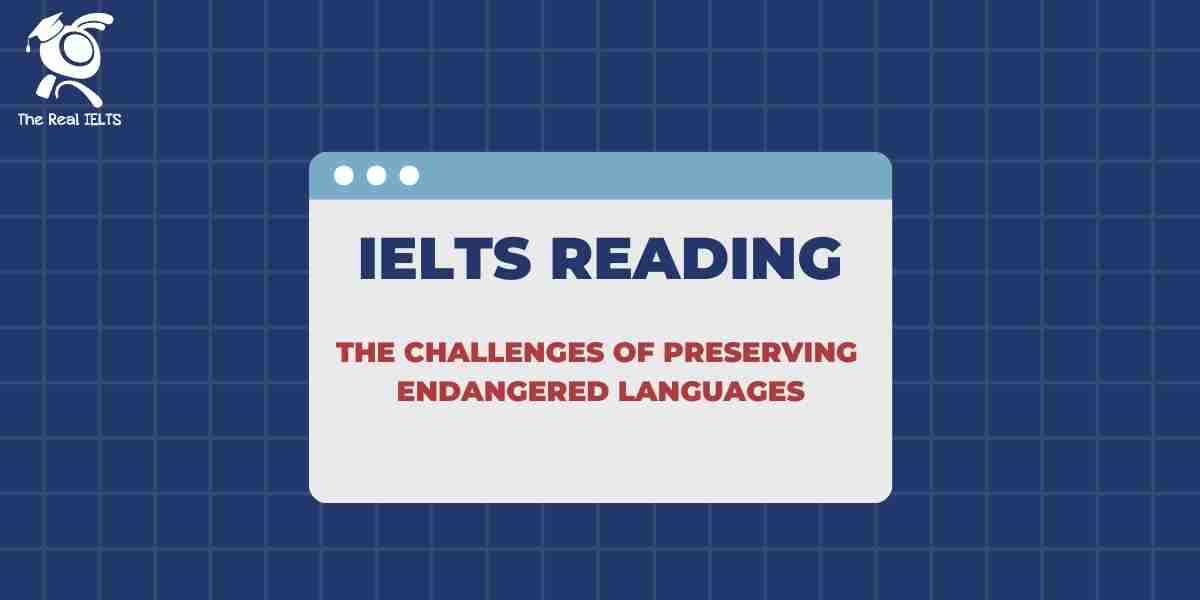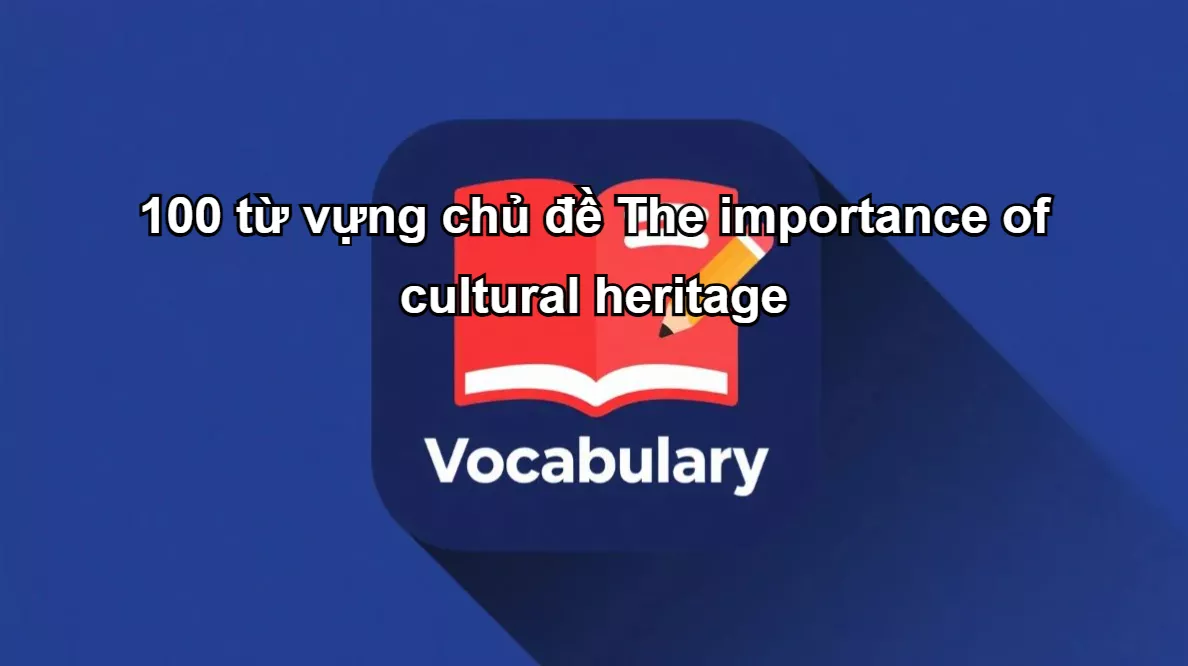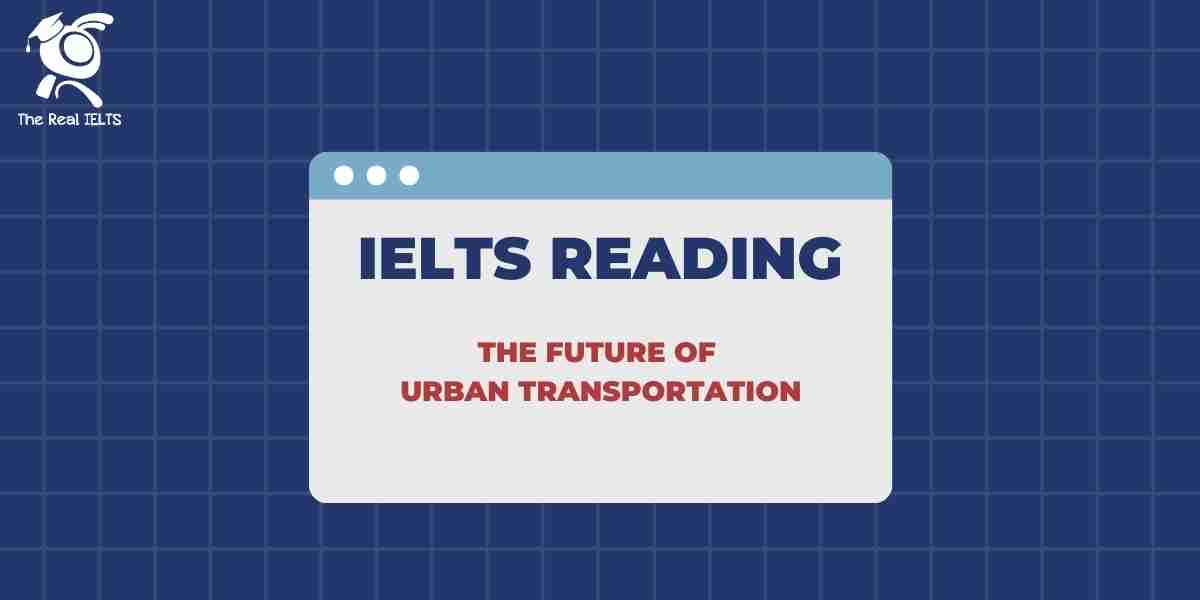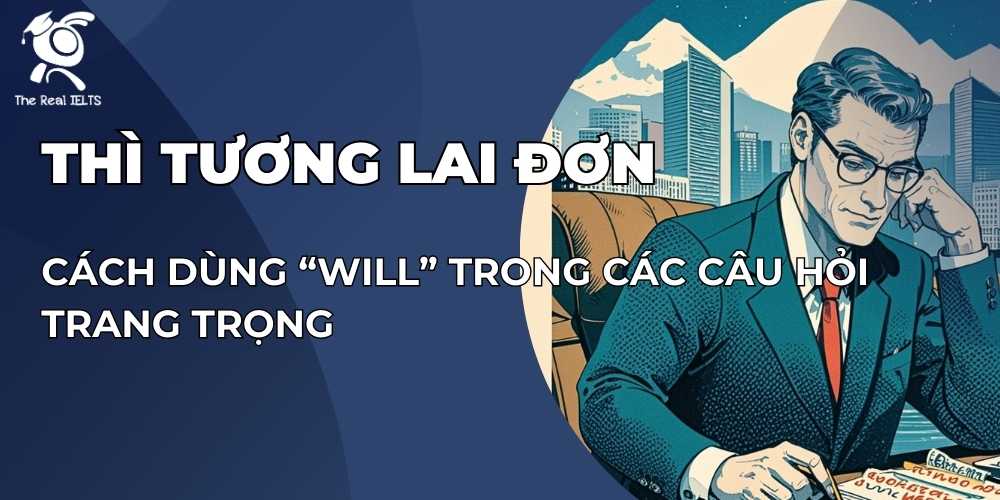Đề thi IELTS Reading có tiêu đề “The Influence of Global Trade on National Economies”
Nhớ đọc thêm các bài luyện thi IELTS nhé.
IELTS Reading:”The Influence of Global Trade on National Economies“
The Challenges of Preserving Endangered Languages
Languages are an integral part of human culture and identity, serving not only as a means of communication but also as vessels for knowledge, traditions, and history. However, the world is currently witnessing a significant decline in linguistic diversity. It is estimated that over 7,000 languages are spoken worldwide, but many of them are on the brink of extinction. UNESCO has classified nearly 40% of these languages as endangered, and some experts predict that up to half of the world’s languages may disappear by the end of the century. This alarming trend presents various challenges for both linguists and communities seeking to preserve endangered languages, with factors such as globalization, technological limitations, and generational gaps all contributing to the complexity of the issue.
One of the primary challenges in preserving endangered languages is the relentless force of globalization. In today’s increasingly interconnected world, dominant languages such as English, Mandarin, and Spanish are becoming the preferred means of communication in education, business, and media. This linguistic shift often pressures speakers of minority languages to abandon their native tongues in favor of more widely spoken languages, leading to language erosion and, ultimately, language extinction. As communities adopt more globalized languages for practical reasons, such as economic opportunities and access to education, the younger generation often grows up with little or no knowledge of their ancestral language. Without active transmission of these languages to future generations, they become increasingly vulnerable to extinction.
In addition to globalization, the lack of resources and infrastructure for documenting and teaching endangered languages further exacerbates the problem. Many endangered languages are spoken in remote or marginalized communities with limited access to educational tools or formal support systems. Developing dictionaries, grammar books, or language-learning programs for these languages can be both time-consuming and costly. Furthermore, the process of recording and archiving these languages requires specialized knowledge in linguistics, technology, and anthropology. Often, only a few fluent speakers remain, and capturing their knowledge before it is lost is a race against time. In cases where there are no written forms of the language, the task becomes even more daunting as oral traditions must be meticulously transcribed and preserved.
Technological limitations also play a role in the struggle to preserve endangered languages. While modern technology has made it possible to document and store vast amounts of linguistic data, many endangered languages are still underrepresented in digital platforms. Popular language-learning apps, translation software, and online resources tend to focus on widely spoken languages, leaving endangered languages with minimal support. Additionally, many digital tools are not tailored to the unique needs of these languages, particularly those with complex grammatical structures or tonal variations. This digital divide further isolates endangered languages, reducing their accessibility and usability in modern contexts.
Cultural and generational gaps present another significant challenge in language preservation efforts. In many cases, younger generations may view their ancestral language as outdated or irrelevant in today’s globalized world. This perception can create a disconnect between older and younger members of the community, with the younger generation opting to learn and use a more dominant language for social mobility. Even within families, the pressure to conform to societal norms may lead parents to prioritize teaching their children a global language over their native one. This phenomenon, often referred to as “language shift,” accelerates the decline of endangered languages and creates further difficulties for revitalization efforts.
Efforts to preserve endangered languages often face resistance from external political and social forces as well. In some countries, government policies and educational systems may actively discourage or even suppress the use of minority languages in favor of a national language. These policies can have long-lasting effects on linguistic diversity, as generations of speakers are systematically discouraged from using their native tongues in public and private spaces. In extreme cases, languages may be stigmatized or associated with lower social status, further alienating communities from their linguistic heritage.
Despite these numerous challenges, there have been several successful language revitalization efforts that provide hope for endangered languages. One notable example is the revival of the Māori language in New Zealand. Once on the verge of extinction, Māori has experienced a resurgence thanks to concerted efforts by the government, educational institutions, and Māori-speaking communities. The establishment of Māori-language schools, immersion programs, and government recognition of Māori as an official language have all contributed to its revitalization. Similarly, in Wales, the Welsh language has seen a resurgence in both everyday use and cultural significance through educational policies, media initiatives, and community support.
Another approach to preserving endangered languages is the use of digital tools and technology to create accessible language resources. Language documentation projects, such as the Endangered Languages Project and the Living Tongues Institute, work to record and store endangered languages in digital archives, ensuring that future generations have access to these valuable linguistic resources. Additionally, social media platforms and language-learning apps are increasingly incorporating endangered languages into their offerings, providing a modern avenue for language learning and engagement. These efforts, however, require ongoing collaboration between linguists, communities, and governments to be truly effective.
In conclusion, the preservation of endangered languages presents a multifaceted challenge that requires addressing the impacts of globalization, technological gaps, generational shifts, and political factors. While the outlook for many languages remains bleak, successful revitalization efforts in places like New Zealand and Wales demonstrate that with the right combination of community involvement, government support, and technological innovation, endangered languages can be preserved and revitalized. However, time is of the essence, and without immediate and sustained action, the world risks losing not only languages but also the rich cultural heritage and knowledge they carry.
Đề bài thi IELTS Reading
Dạng bài Multiple Choice (Câu hỏi trắc nghiệm)
- How many languages are currently spoken worldwide?
- A. 1,000
- B. 7,000
- C. 3,000
- D. 5,000
- What percentage of languages are classified as endangered by UNESCO?
- A. 20%
- B. 30%
- C. 40%
- D. 50%
- Which of the following is a result of globalization on endangered languages?
- A. Increased number of bilingual speakers
- B. More dominant languages being spoken
- C. Improved preservation efforts
- D. Government support for minority languages
- What is one of the main challenges in documenting endangered languages?
- A. Lack of fluent speakers
- B. Complexity of grammar
- C. Government restrictions
- D. High cost of translation
- Which of the following countries has successfully revitalized its endangered language?
- A. France
- B. Germany
- C. New Zealand
- D. Canada
- The article mentions that young people may find their ancestral language:
- A. Essential for communication
- B. A source of economic opportunity
- C. Outdated and irrelevant
- D. Easier to learn than global languages
- What tool is increasingly being used to help preserve endangered languages?
- A. Grammar books
- B. Social media platforms
- C. Government laws
- D. Immersion schools
- What does “language shift” refer to?
- A. A global effort to promote endangered languages
- B. The process of younger generations abandoning their native language
- C. The documentation of minority languages
- D. The influence of globalization on language development
- Which factor is least likely to affect the preservation of endangered languages?
- A. Technological limitations
- B. Globalization
- C. Cultural resistance
- D. Increasing number of speakers
- Which organization is involved in documenting endangered languages?
- A. Living Tongues Institute
- B. The United Nations
- C. World Economic Forum
- D. The International Monetary Fund
Dạng bài True/False/Not Given
- Up to half of the world’s languages are predicted to disappear by the end of the century.
- True
- False
- Not Given
- All governments actively support the preservation of endangered languages.
- True
- False
- Not Given
- Technology is the sole factor contributing to the decline of endangered languages.
- True
- False
- Not Given
- Māori language was always widely spoken in New Zealand and never faced extinction.
- True
- False
- Not Given
- The Welsh language has never faced challenges in its revitalization.
- True
- False
- Not Given
Dạng bài Yes/No/Not Given
- Does the author believe that modern technology is essential for preserving endangered languages?
- Yes
- No
- Not Given
- Is it the author’s opinion that young people should prioritize global languages over native ones?
- Yes
- No
- Not Given
- Does the author suggest that all endangered languages can be saved with enough effort?
- Yes
- No
- Not Given
Dạng bài Matching Information (Nối thông tin)
19-22. Match the following challenges with the appropriate descriptions mentioned in the text:
- A. Globalization
- B. Technological limitations
- C. Cultural and generational gaps
- D. Lack of resources
- Limited availability of learning materials.
- Young people find their ancestral language irrelevant.
- Dominance of major languages such as English.
- Inadequate representation of minority languages online.
Dạng bài Matching Headings (Nối tiêu đề với đoạn văn)
23-26. Match the correct headings to the sections of the passage:
- A. The impact of globalization on language diversity
- B. Successful language revitalization efforts
- C. The role of digital technology in language preservation
- D. Challenges in documenting and recording languages
- Paragraph 1
- Paragraph 3
- Paragraph 5
- Paragraph 6
Dạng bài Matching Features (Nối đặc điểm)
27-29. Match the countries with their language revitalization efforts:
- A. New Zealand
- B. Wales
- C. Both A and B
- Government policies to protect minority languages.
- Use of immersion schools to teach the native language.
- Official recognition of the native language.
Dạng bài Matching Sentence Endings (Nối phần kết câu)
30-32. Complete the following sentences by matching them with the correct endings:
- A. are losing fluency in their native tongues.
- B. with minimal support from global platforms.
- C. lead to language erosion and loss.
- The younger generations in many communities…
- Endangered languages are often left…
- The pressure to adopt global languages can…
Dạng bài Sentence Completion (Hoàn thành câu)
33-35. Complete the sentences using words from the passage:
- Many endangered languages are spoken in ____________ communities with limited resources.
- The process of ____________ endangered languages requires skilled linguists and resources.
- In some cases, endangered languages are linked to ____________ social status, further alienating speakers.
Dạng bài Summary Completion
36-38. Complete the summary of the passage below using words from the passage.
Language preservation faces many challenges, including the pressure of ____________, which leads communities to prioritize widely spoken languages. Additionally, the ____________ required to document and teach these languages are often lacking. However, successful revitalization efforts, like those in ____________, offer hope for preserving linguistic diversity.
Dạng bài Short Answer Questions (Câu hỏi trả lời ngắn)
- What is the estimated percentage of languages classified as endangered by UNESCO?
- Name one tool or platform that has been used to preserve endangered languages.
Đáp án bài thi IELTS Reading
Dạng bài Multiple Choice (Câu hỏi trắc nghiệm)
- B
- C
- B
- A
- C
- C
- B
- B
- D
- A
Dạng bài True/False/Not Given
- True
- False
- False
- False
- Not Given
Dạng bài Yes/No/Not Given
- Yes
- No
- No
Dạng bài Matching Information (Nối thông tin)
- D (Lack of resources)
- C (Cultural and generational gaps)
- A (Globalization)
- B (Technological limitations)
Dạng bài Matching Headings (Nối tiêu đề với đoạn văn)
- A (The impact of globalization on language diversity)
- B (Successful language revitalization efforts)
- C (The role of digital technology in language preservation)
- D (Challenges in documenting and recording languages)
Dạng bài Matching Features (Nối đặc điểm)
- C (Both A and B)
- A (New Zealand)
- C (Both A and B)
Dạng bài Matching Sentence Endings (Nối phần kết câu)
- A (are losing fluency in their native tongues)
- B (with minimal support from global platforms)
- C (lead to language erosion and loss)
Dạng bài Sentence Completion (Hoàn thành câu)
- remote
- revitalizing
- lower
Dạng bài Summary Completion
- globalization
- resources
- New Zealand
Dạng bài Short Answer Questions (Câu hỏi trả lời ngắn)
- 40%
- Social media platforms
Luyện tập bài khác ở bài viết:”100 bài luyện IELTS Reading 2024 – 2025“















